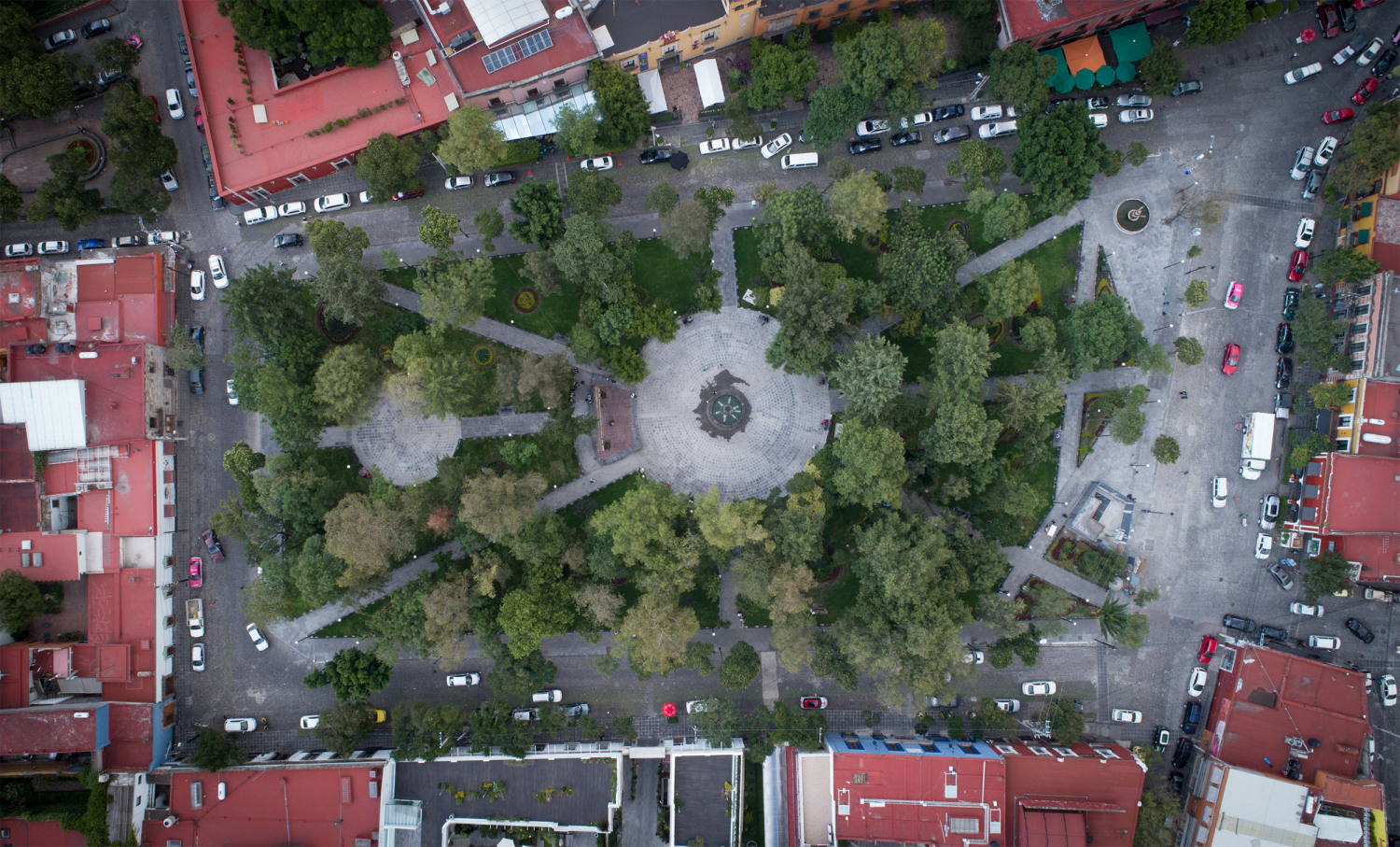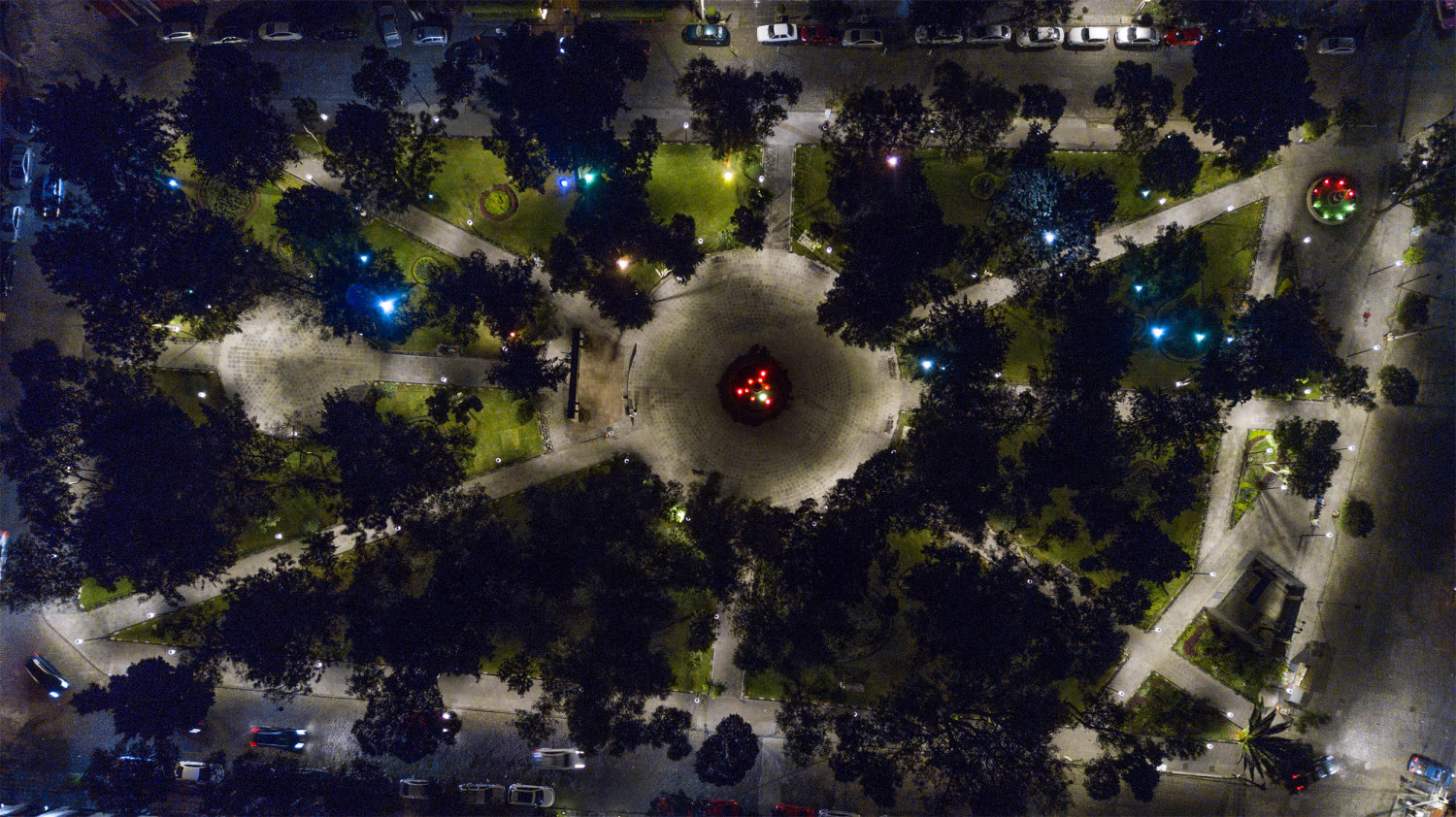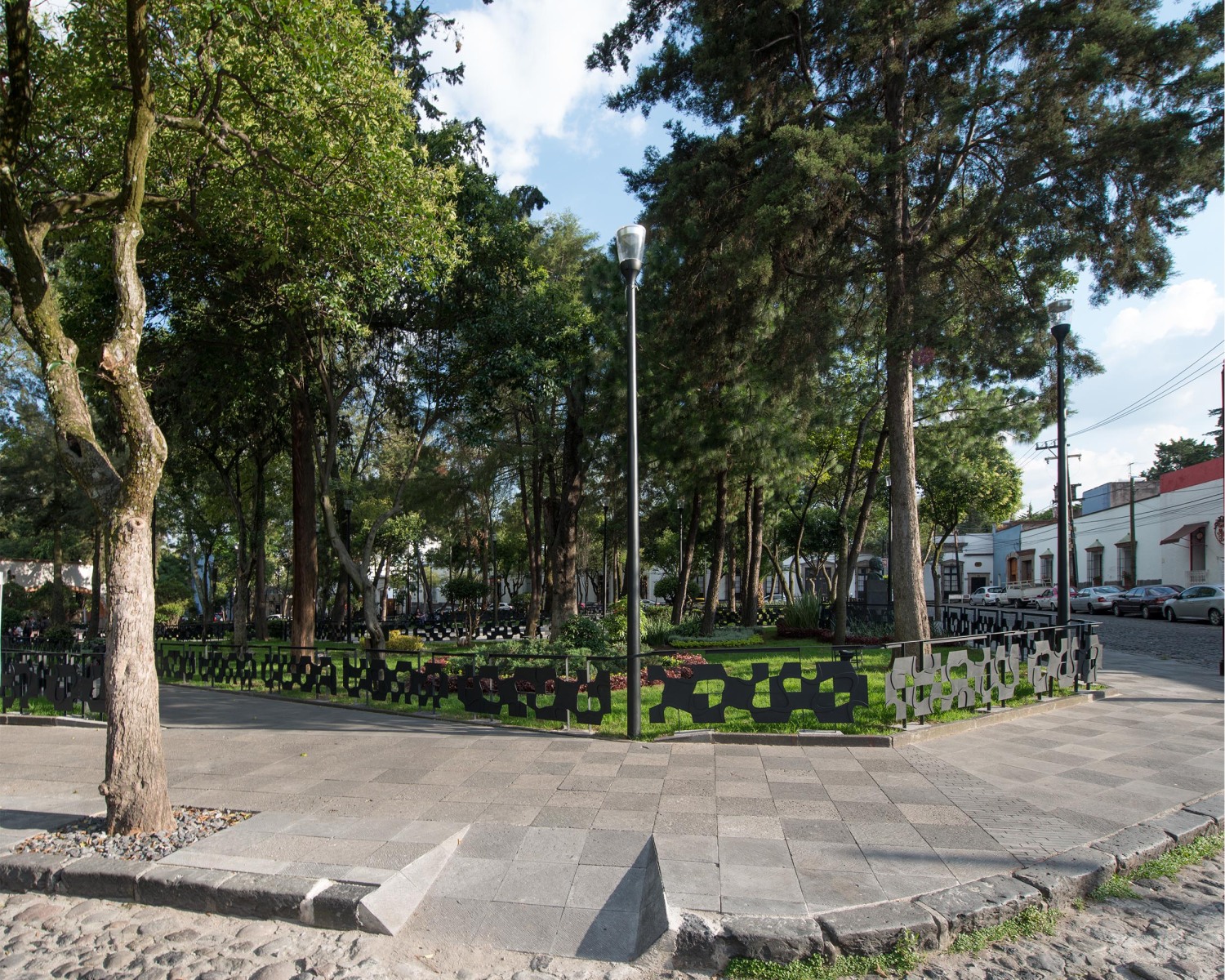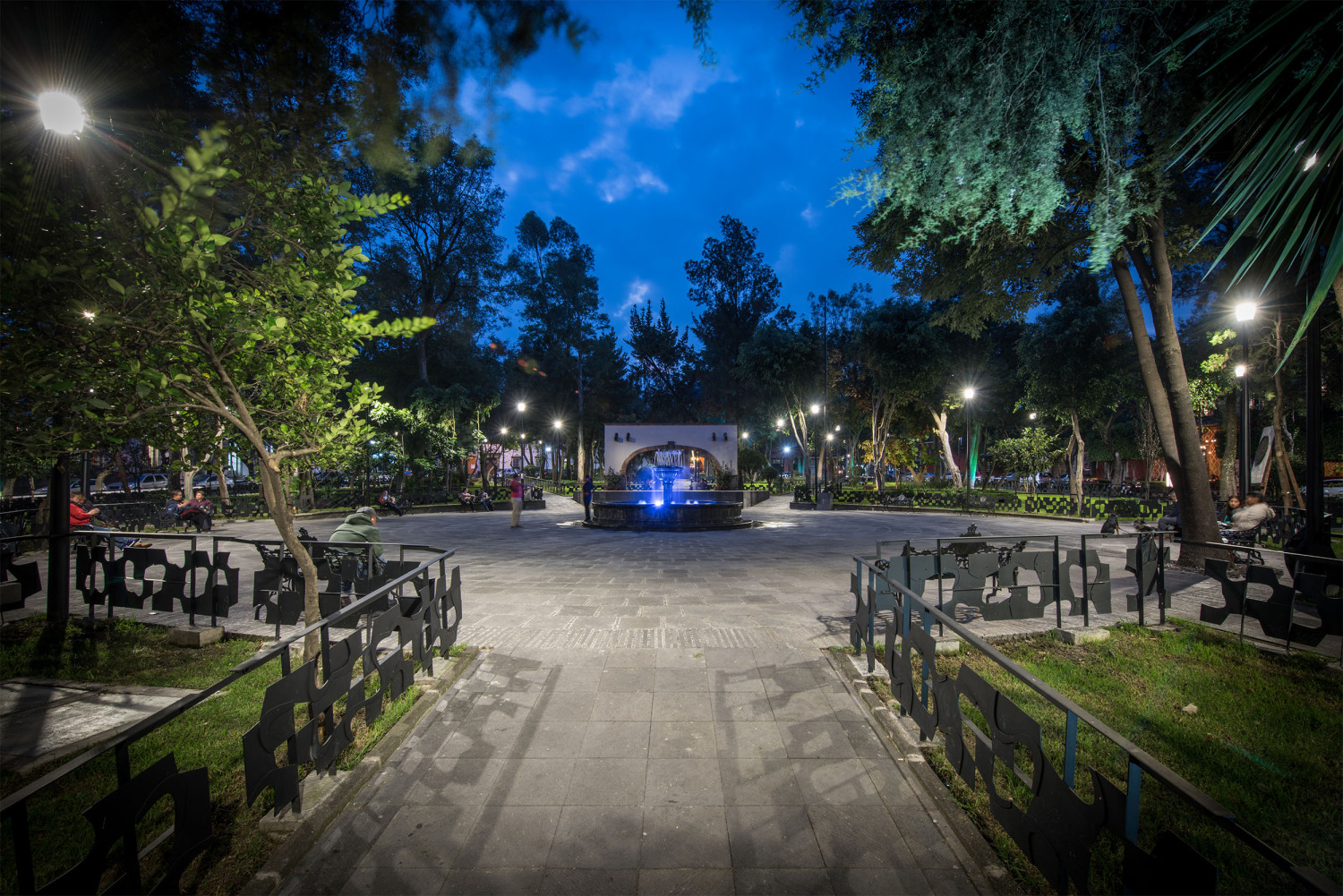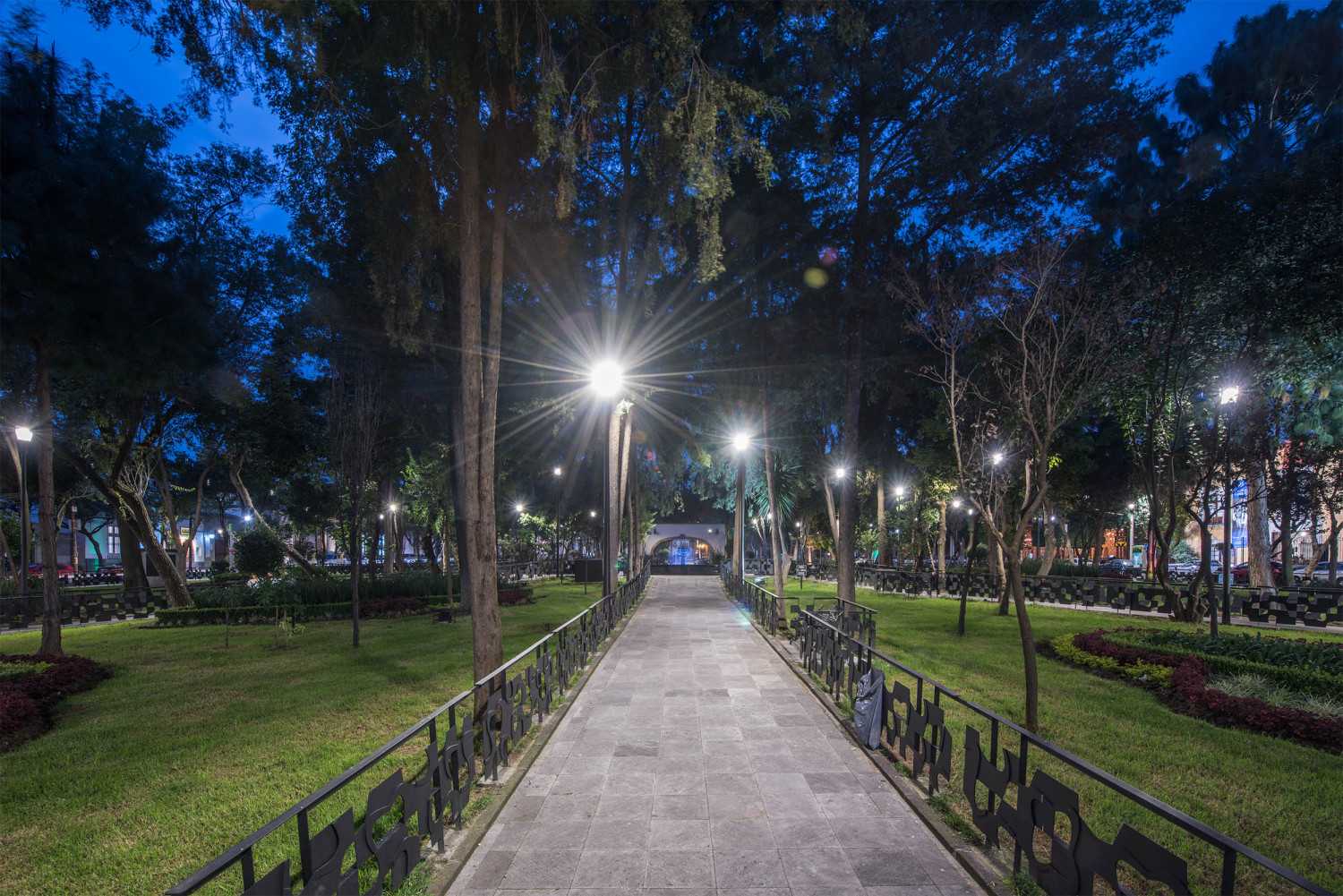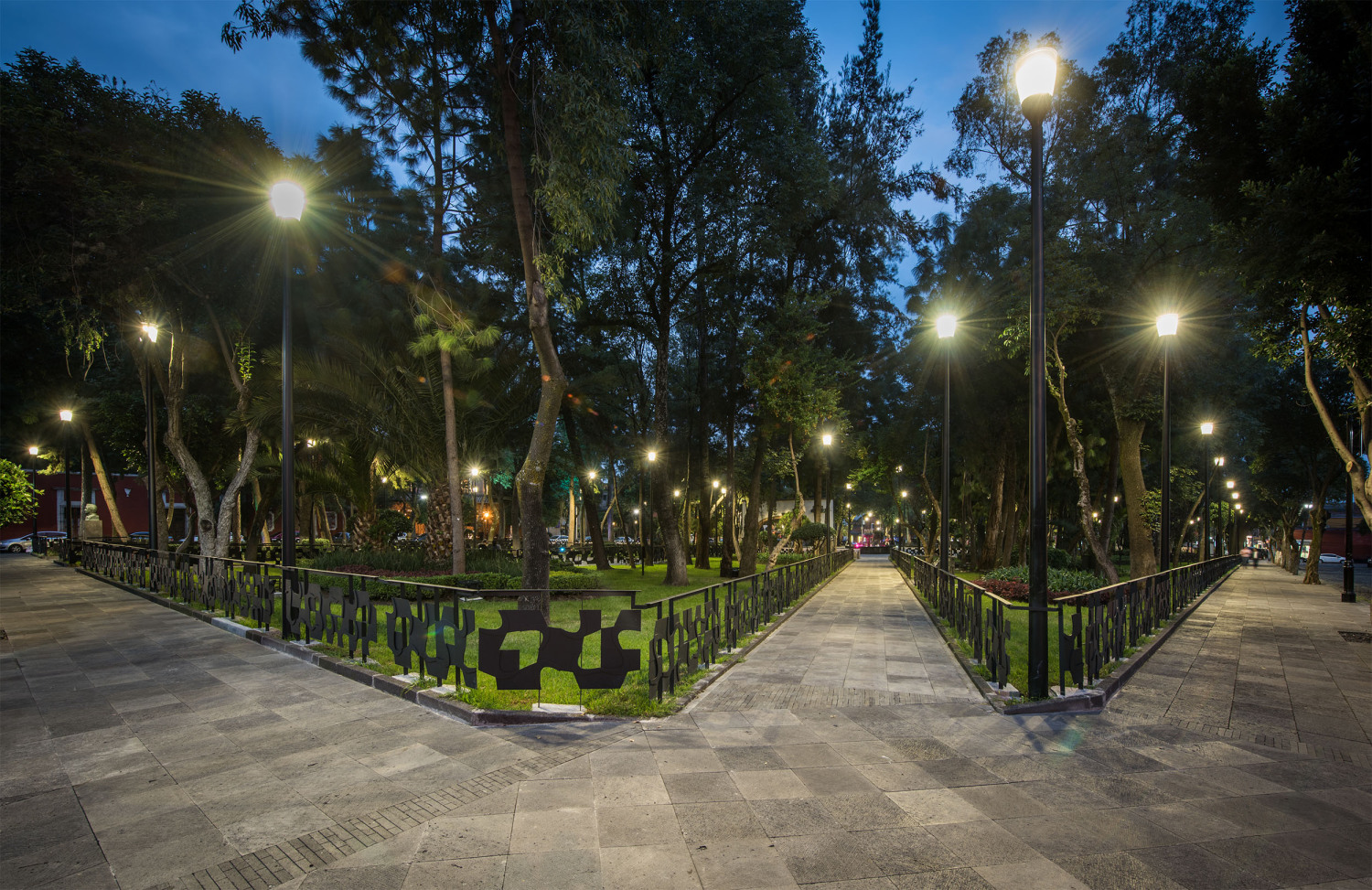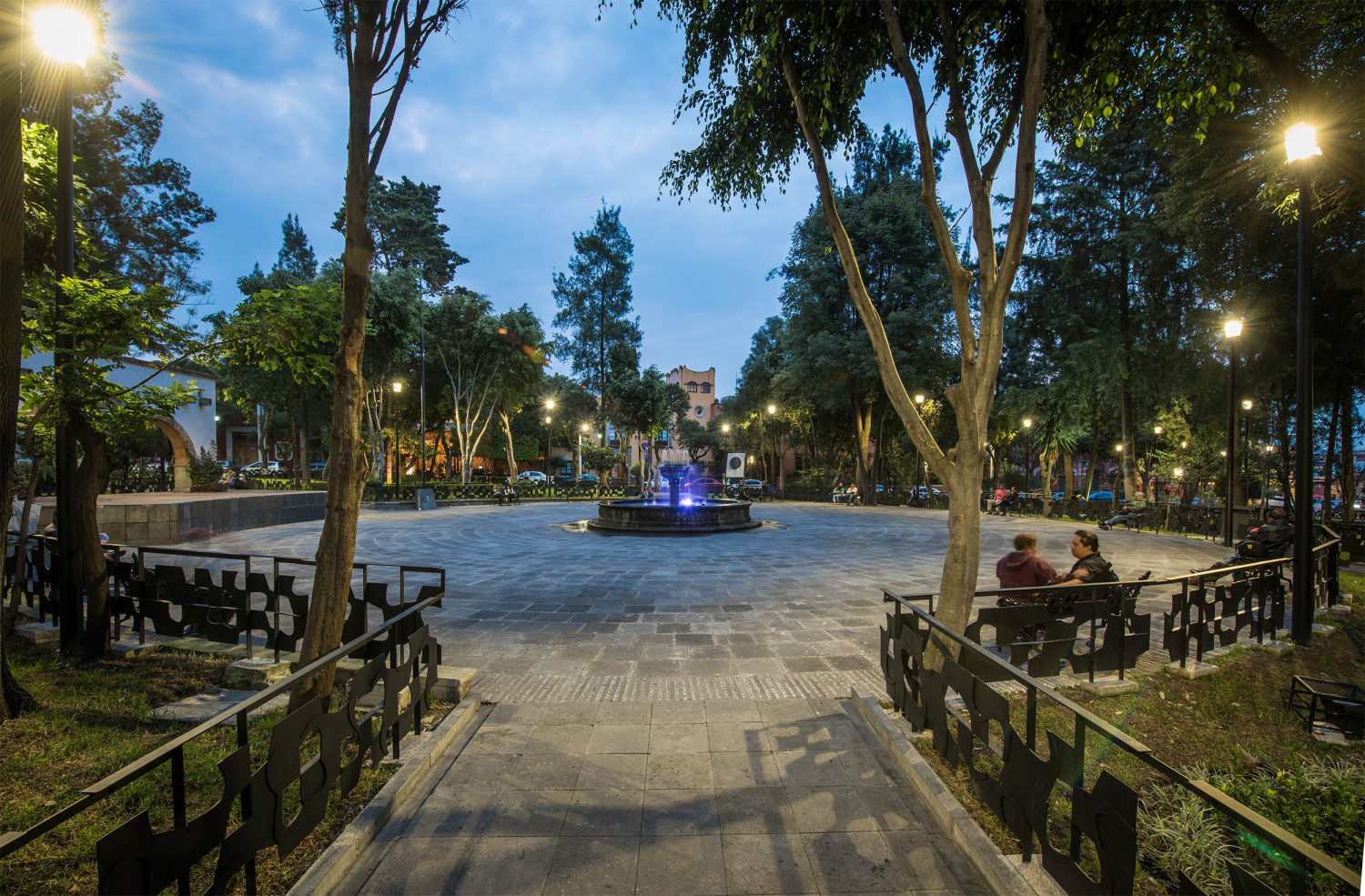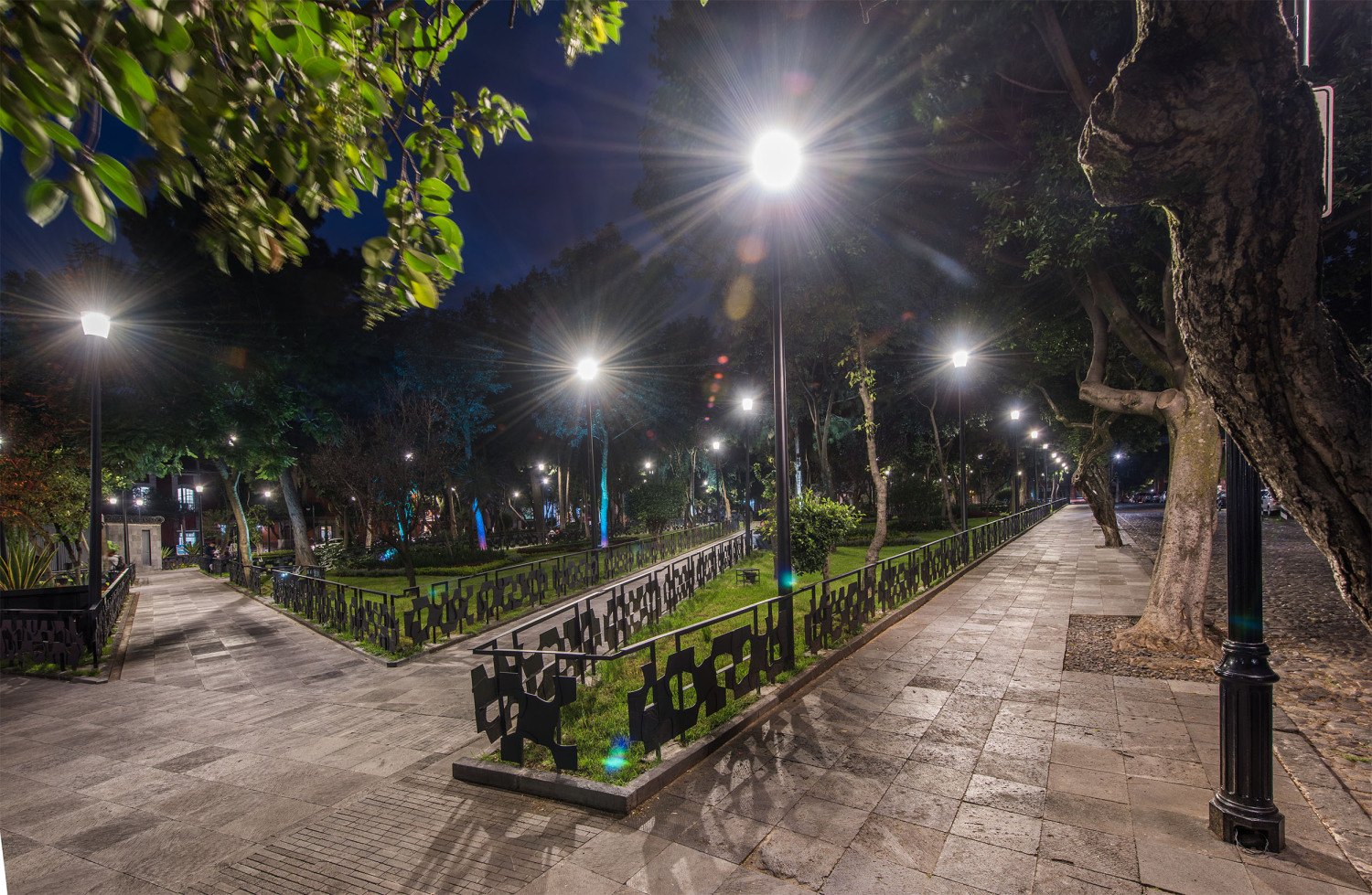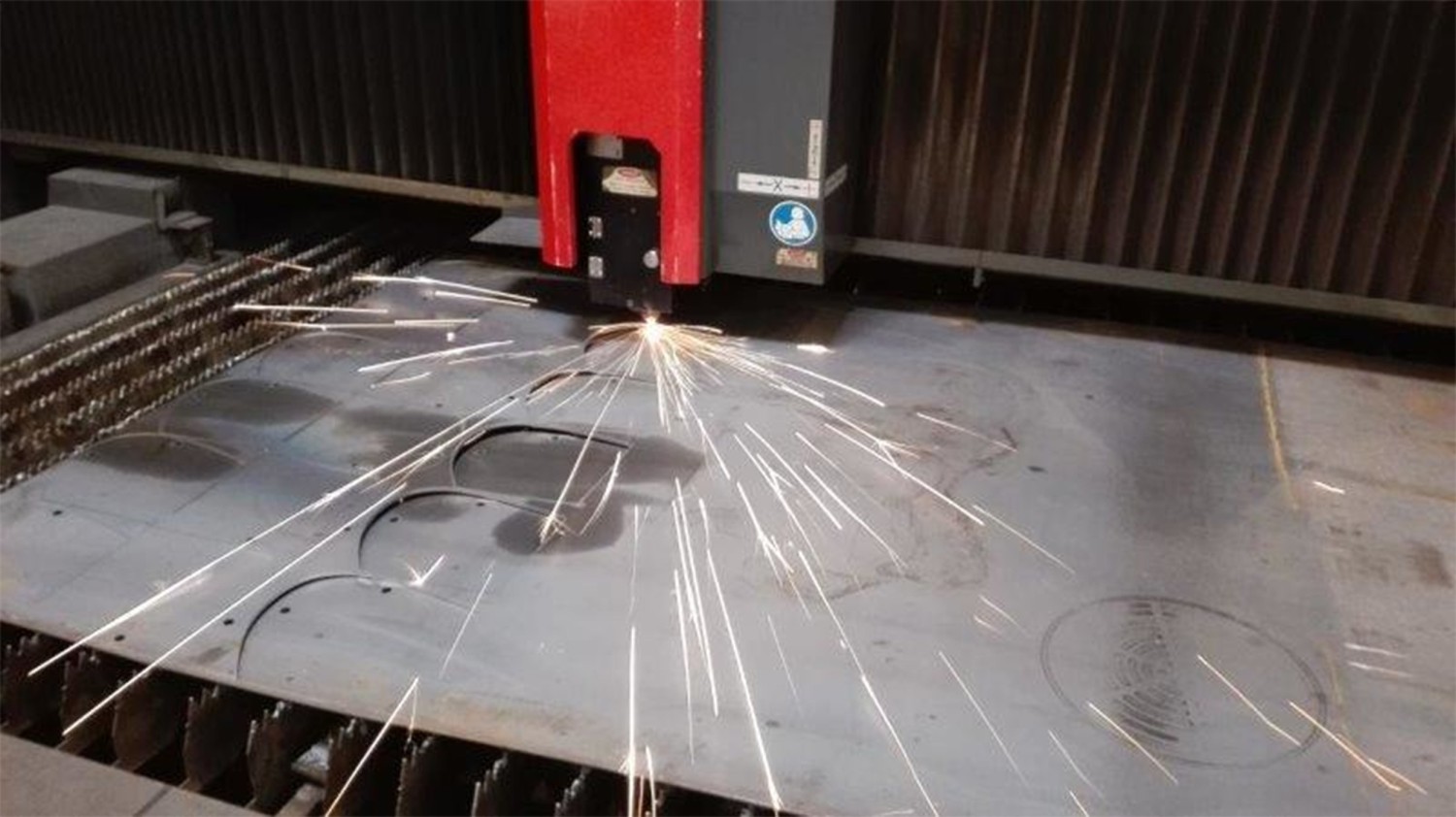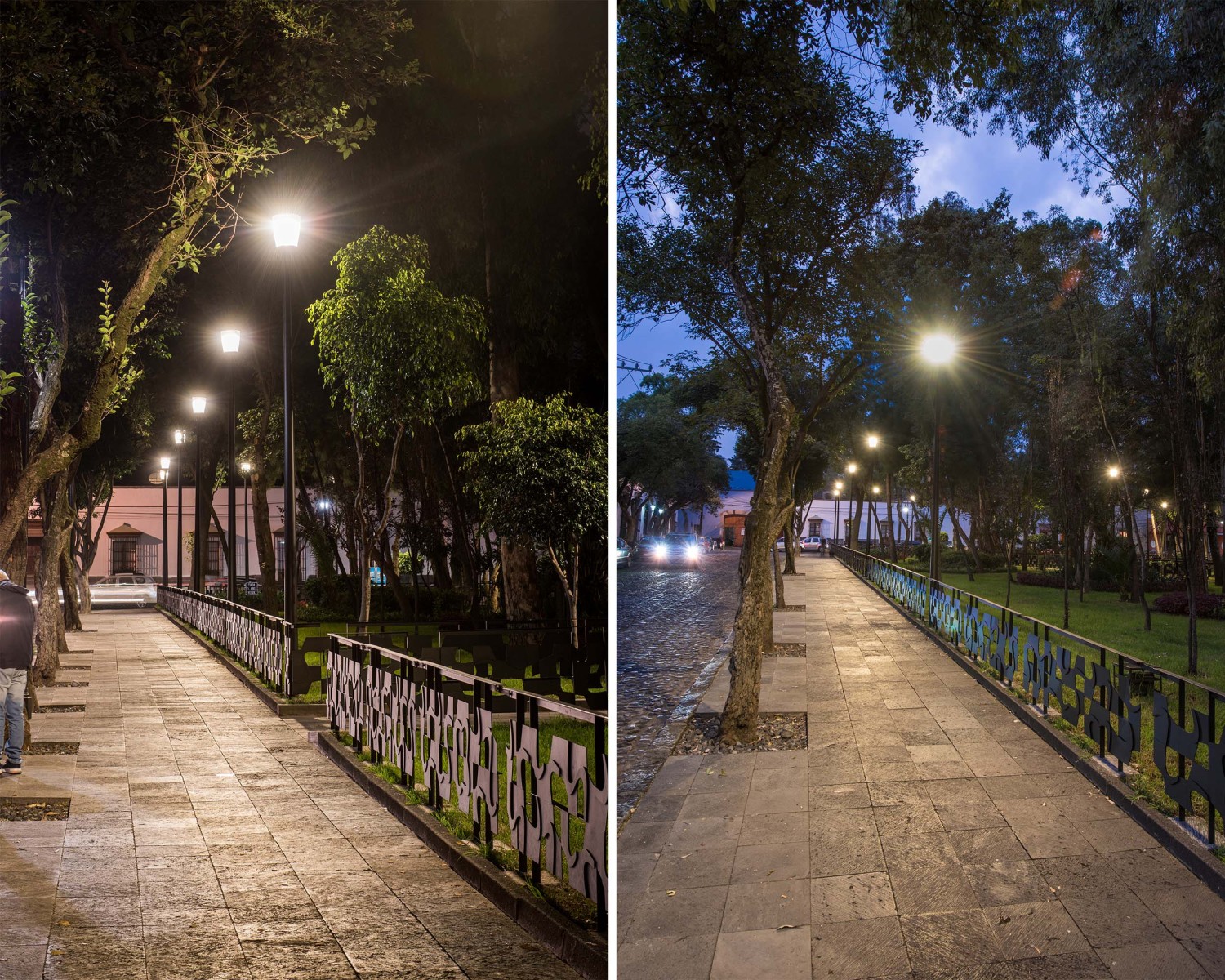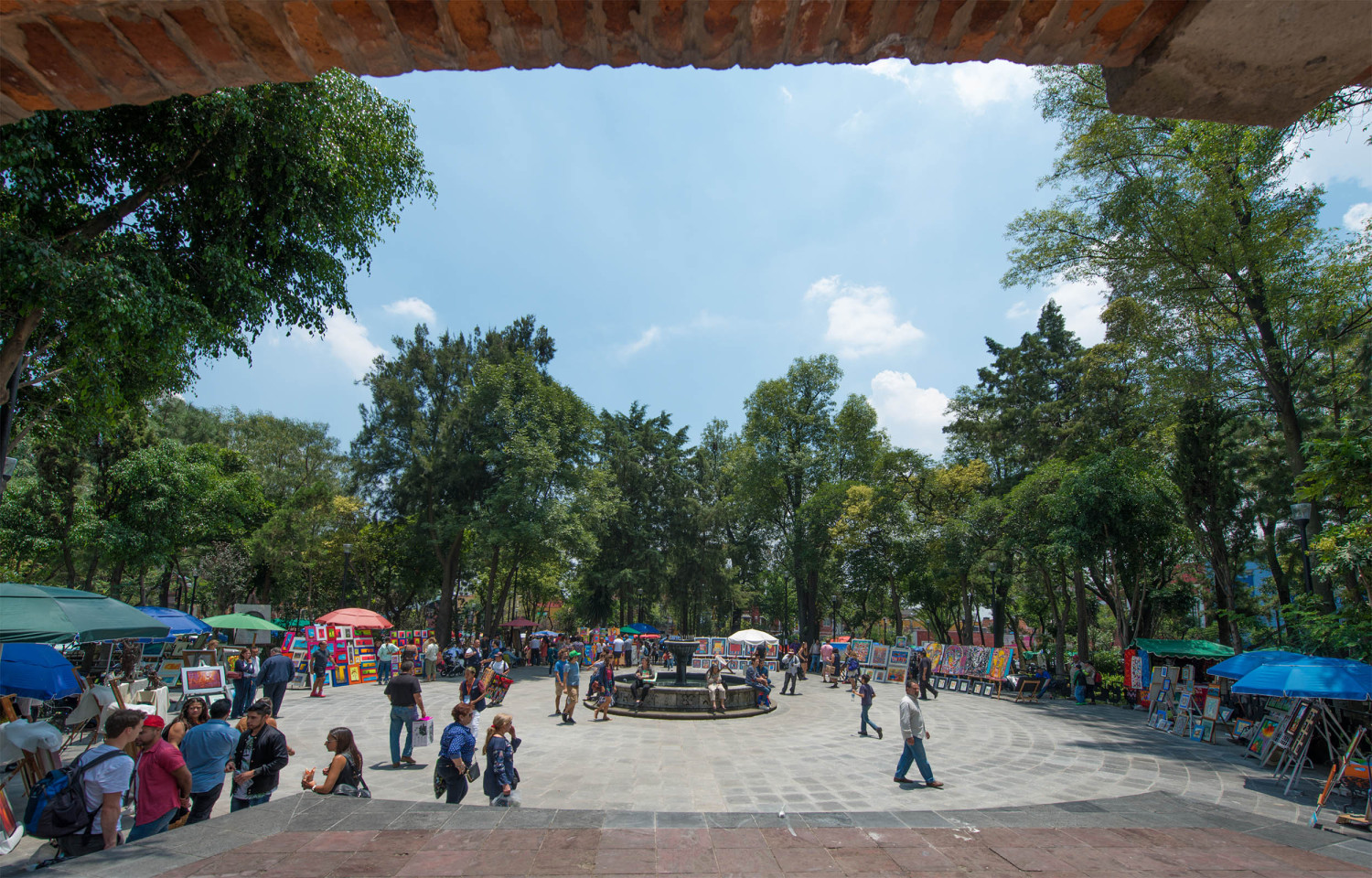| 公司: | Alejandro de la Vega Zulueta | 类型: | 景观 |
|---|---|---|---|
| 地区: | 墨西哥 | 标签: | 广场空间 | 公园绿地 |
圣哈辛托广场位于墨西哥城圣安吉的中心地带,几个世纪以来,圣哈辛托广场一直是该地区最相关的商业和社会空间之一。最近,建筑师Alejandro de la Vega Zulueta为该公共广场开发并实施了一个改造和修复项目。
Located in the heart of San Angel, Mexico City, for centuries San Jacinto Square has been one of the most relevant commercial and social spaces in the area. Recently, architect Alejandro de la Vega Zulueta developed and implemented a renovation and rejuvenation project for the public square.
该项目由墨西哥调查和保护文化遗产的最高权威机构INAH(国家人类学和历史研究所)委托实施。INAH的文件和计划表明,广场的原始设计可以追溯到16世纪,在当时被称为Tenanitla(在纳瓦特尔语中意为 "石墙旁")。
The project was commissioned by the INAH [National Institute of Anthropology and History], Mexico's top authority in the investigation and preservation of cultural heritage. INAH documents and plans indicate that the original design of the square dates back to the 16th century, in what was then known as Tenanitla (meaning 'next to the stone wall' in Nahuatl).
在建筑上,它的元素随着时间的推移被20世纪的组件所取代,包括不同类型的混凝土,以及从城市其他公共空间转移到广场的石板和喷泉。因此,广场仅存的原始元素是其布局。
Architecturally, its elements have been replaced over time with 20th-century components, including different types of concrete, as well as flagstones and fountains that have been transferred into the square from other public spaces in the city. Consequently, the only remaining original element of the plaza is its layout.
拥抱空间的过去,以及它现在作为圣安吉的艺术、商业和社交聚集点的角色,有趣的拼凑让建筑师创造了一个全新的元素,也可以应用到墨西哥城的其他公共空间。由此而产生的圣哈辛托广场的新面貌是以审美和设计的统一、艺术过程和定义公共空间的目的等概念为指导的。
Embracing the space’s past, as well as its current role as an artistic, commercial, and social gathering point in San Angel, the interesting pastiche allowed the architect to create an entirely new code that can be applied to other public spaces in Mexico City as well. The resulting new look for Plaza San Jacinto is guided by the concepts of aesthetic and design unification, artistic process, and defining the purpose of public spaces.
鉴于墨西哥以手工艺和艺术家市场最为著名,建筑师必须突出艺术和手工工艺元素。现代版的广场不再包括台阶或斜坡来阻挡普遍的通道,所以用火山鹅卵石将小路同质化,用人工砍刀对石头进行切割,以创造整个广场的主题纹理。为了补偿火山鹅卵石在角度和设置上产生的差异,用一种叫做 "rajueleado "的技术,手工嵌入了凹陷的石头。此外,为了使该空间在夜间安全和无障碍,工程师Jorge Zinser开发了一个新的照明系统,以覆盖整个公共广场。
Given that the plaza today is best known for its handicraft and artist market, it was important for the architect to give prominence to artistic and manual processes. The modern version of the square no longer includes steps or slopes to block universal access, so the pathways were homogenized with volcanic cobblestone, using manual machete cuts against the stones to create a thematic texture throughout the square. To compensate for resulting variances in the angles and settings of the volcanic cobblestone, chinked stones were embedded by hand using a technique called rajueleado. Additionally, to make the space safe and accessible at night, engineer Jorge Zinser developed a new lighting system to cover the entire public square, without being invasive.
然而,设计新的金属护栏以保护广场上郁郁葱葱的绿色区域,这结合了亚历杭德罗-德拉维加作为艺术家和建筑师的共生世界,在美学概念中,他设想将他自己的一件原创作品改编为相关的装饰性设计元素,使目的明确的围栏充满活力。利用他不断发展的雕塑作品 "剪影",并运用他在参数化技术方面的专业知识,他创造了一个新的模式,用激光和氮气切割来制作这些作品,然后通过机器人焊接将他的艺术与建筑结合起来,确保了精度和质量。组装完成后,这些作品被涂上静电漆,以保证耐久性。
However, it was the design of new metal guardrails to protect the square’s lush green areas that combined the symbiotic worlds of Alejandro de la Vega as both an artist and architect, In the aesthetic conception, he envisioned the adaptation of one of his own original works as a relevant and decorative design element that would animate the purposeful fencing. Using manipulations of his evolving sculpture, Silhouette, and by applying his expertise in parametric techniques, he created a new pattern, made laser and nitrogen cuts to produce the pieces, and then married his art to his architecture through robotic welding, ensuring precision and quality. Once assembled, the pieces were painted with electrostatic paint for durability.
从历史上看,公共广场是体验和书写社区及其历史的地方。今天的景观有艺术家、野餐者、散步者、爱好者等等,一个项目如果不考虑这些人群,就没有意义。所以,在尊重广场的历史和意义的同时,设计师对今天公众对广场使用情况的设想才是项目真正的价值所在,从围栏在美学上将艺术和建筑融合在一起,到广场的通用通道坡道、鹅卵石小径等。总的来说,振兴历史广场的设计、工艺和材料都是优先考虑的,目的是通过让用户随时都有机会享受到广场的乐趣,打造21世纪最好的圣哈辛托广场。
Historically, public squares are the places where communities and their histories are experienced and written. With today’s landscape of artists, picnickers, strollers, lovers, and much more, a project that didn’t consider those demographics would make no sense. So, while respecting the history and significance of the Plaza, Alejandro de la Vega’s vision of today’s public usage of the square is what provides the project’s true value, from the fencing’s aesthetically-compelling merger of art and architecture to the Plaza’s universal access ramps, cobblestone paths, and more. Collectively, the design, processes, and materials used to revitalize the historic square were prioritized in order to build the best possible 21st-century version of Plaza San Jacinto, by giving its users the opportunity to enjoy it at all times.
项目名称:San Jacinto Square’s Urban Renewal
设计师:Alejandro de la Vega Zulueta
项目客户:墨西哥城管理局
项目地点:墨西哥 墨西哥城
照明设计:Jorge Zinser Cruz
委托艺术品:Alejandro de la Vega (adelavega)
考古顾问:INAH(国家历史人类学研究所)
Project: San Jacinto Square’s Urban Renewal
Client: Mexico City, San Angel Authority
Location: San Jacinto Square, San Angel, Mexico City
Design: Alejandro de la Vega Zulueta
Lighting: Jorge Zinser Cruz
Commissioned Artwork: Alejandro de la Vega (adelavega)
Archeologist: INAH (National Institute of History and Anthropology)
更新日期:2020-06-30 16:21:24
非常感谢 Alejandro de la Vega Zulueta 带来的精彩项目, 查阅更多Appreciations towards Alejandro de la Vega Zulueta for sharing wonderful work on hhlloo. Click to see more works!
